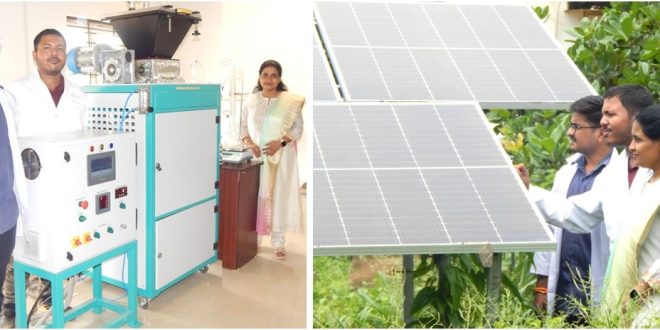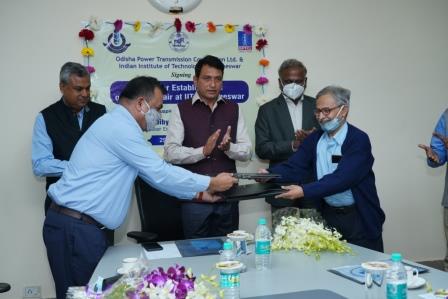A research team from the School of Infrastructure at the Indian Institute of Technology (IIT) Bhubaneswar has made a groundbreaking advancement in sustainable waste management with the development of a solar-powered microwave pyrolysis reactor. This cutting-edge technology is designed to recover valuable resources from various waste materials, including biomass and plastics, through an efficient and eco-friendly process. The reactor uses microwave-assisted pyrolysis to swiftly convert waste into valuable end products like biochar and bio-oil.
A Green Technology for Sustainable Waste Management
Current solid waste management practices predominantly rely on incineration, biogas plants, or landfill disposal, all of which pose significant environmental challenges. Incineration, for instance, often results in the release of toxic gases and ashes, contributing to pollution. In contrast, the microwave-assisted pyrolysis technology developed by IIT Bhubaneswar presents a carbon-neutral waste conversion method that not only minimizes pollution but also offers the potential to generate carbon credits.
Dr. Remya Neelancherry, the lead researcher of the project, emphasized the importance of this innovation, stating, “Microwave-assisted pyrolysis is a technology that produces valuable end products like biochar, bio-oil, and syngas in a very short amount of time, meeting the urgent need for sustainable waste management.”
How the Technology Works
The reactor operates entirely on solar power, making it a self-reliant and environmentally friendly technology. It utilizes microwave radiation to generate homogeneous heat within the feedstock, allowing for the precise control of reactions and the efficient conversion of waste into valuable products. With a conversion capacity of 10 kg/h, this mobile technology requires minimal footprint area, promoting decentralized waste management across various locations.
Valuable End Products: Biochar and Bio-Oil
The biochar produced through this process is a highly porous carbonaceous material with numerous applications in agriculture, carbon capture, and wastewater treatment. It also holds promise as a replacement for coal, contributing to the global push towards net-zero emissions. Meanwhile, bio-oil serves as an alternative to petroleum products, providing a renewable energy source that can support efforts to meet the IPCC’s (Intergovernmental Panel on Climate Change) 2°C global warming challenge.
Wide Applications and Market Potential
This innovative waste-to-energy technology offers a range of applications across sectors such as healthcare, transportation, and industrial processes. Its decentralized nature makes it ideal for implementation by municipalities and industries, potentially generating significant revenue with minimal pollution compared to traditional waste management methods.
“Depending on the waste management needs, this technology can be implemented in two forms: with a fixed bed reactor or a fluidized bed reactor. We welcome investors to explore this technology, ensuring environmental protection while fostering market growth,” Dr. Remya concluded.
 Update Odisha-Latest Odisha News I Breaking News Get latest news on Odisha, Govt. Jobs, OSSC, OPSC, Entertainment, Crime, Sports, and Education
Update Odisha-Latest Odisha News I Breaking News Get latest news on Odisha, Govt. Jobs, OSSC, OPSC, Entertainment, Crime, Sports, and Education



